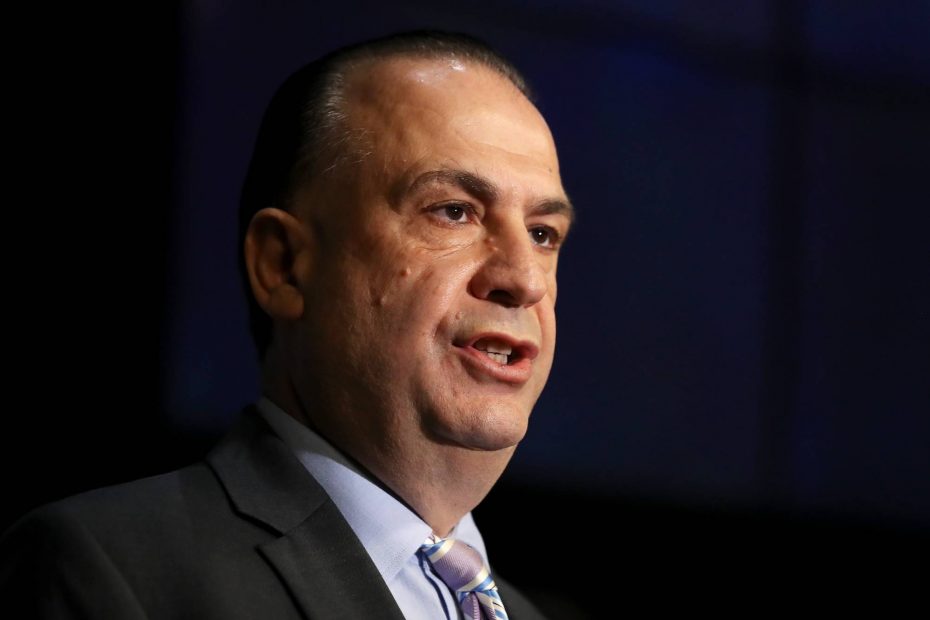In time, change to the leadership at the NRL will be inevitable. Succession planning is a key part of good governance.
You don’t want people to overstay their welcome in leadership positions; just in case their their views become tired and stale.
Both ARL Commission chair Peter V’landys and NRL CEO Andrew Abdo have been in their role for four years, so succession planning must be a topic of conversation, even if that planning only comes to fruition in the next three to four years.
But forget three to four years, the conversation has also been playing out in the media recently.
In the weeks leading up to the Las Vegas fixtures there have been some curious comments made.
When the clubs were concerned about logistical aspects of the Las Vegas venture, like player visas and medical insurance, club leadership called an urgent meeting with V’landys.
While he is a heavy hitter and well known for his ability to get things done, it is unusual for a chair to be involved in operational matters.
Those types of conversations are typically left to the Chief Executive Officer. That is a CEO’s role, to handle short-term and operational aspects of an organisation, while a board is supposed to be more future focused, on strategy and broader direction.
It’s a trend we’ve seen throughout V’landys time as chair. I particularly recall how involved V’landys was during negotiations with the Rugby League Players Association.
The point I’m making might not seem like a big deal, but from a governance perspective it’s important that board members and the executive know their roles.
(Photo by Mark Kolbe/Getty Images)
Soon after V’landys got involved in the Las Vegas conversations, Roy Masters penned a piece for the Sydney Morning Herald suggesting that there was an appetite from club leadership to see him take on the role of Executive Chair.
This would effectively mean that V’Landys would hold the role of Chair and CEO at the same time.
Let’s put aside the fact that this will never happen (for V’landys to assume this role, it would require a change to the ARL Commission’s constitution and to do this, agreement would be needed from NSW and QLD rugby league, both of which are in a stoush with head office right now); but in a way I would almost welcome this outcome, given that V’landys already seems to be doing both roles anyway.
But it has made me think about who will be the next NRL CEO and chair of the ARLC, if not Vlandys assuming both roles.
V’landys had his tenure extended for a further three years at the NRL Annual General Meeting which was held on Wednesday morning. But he has suggested he may not see out the full term.
Kate Jones and Megan Davis also had their terms extended at the same meeting. There are suggestions that Jones, who is a former Queensland politician, may be next in line for the chair role.
It would certainly be a welcome change to see a female hold the role of chair. Jones clearly has the capability as the has a board member since 2020. The additional responsibilities that the chair has are more about facilitating boardroom conversations, ensuring that all voices are heard and having a more prominent role in speaking to external stakeholders (as a politician, she should have that skill in spades).
Over the last five years, we have seen more women involved in rugby league in almost every aspect of the game; refereeing, playing and media involvement.
In particular, the NRLW has been a revelation and as someone who now has a team in the men’s and women’s premiership NRLM to support, it has certainly made my club feel whole (although a lot more painful when both your teams lose on the weekend).
(Hanna Lassen/Getty Images)
But the one area where the game has regressed is female leadership.
Whatever comments you wish to make on their performance, if you step back five years there were more women that held key leadership positions across the game. Marina Go was chair at the Wests Tigers, Lynne Anderson held the same role at Canterbury and the Bulldogs were also the first club to appoint a female CEO in Raelene Castle.
The challenges these women faced were well documented.
There are still clubs with no women on their boards. Most clubs have one. The Canberra Raiders lead the charge at three.
I’m certainly not suggesting that we appoint women for the sake of it, but there are talented women who could contribute positively in executive leadership.
Diversity, whether it be in ethnicity, gender, age or any other factor is important so we can get different perspectives, encourage people to think about things in different ways and also better reflect the communities that we all live in.
This week it was announced that Dr Saranne Cooke had been appointed the new Chair of Racing NSW, the first woman to hold the position.
It’s long overdue for a similar appointment in rugby league.
